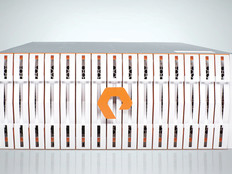Raritan Power IQ 2.1
Data center power management software enables analytics that IT staff can act upon to improve energy efficiency.
In these days of climate change, rising utility rates and the need to demonstrate green initiatives, managing power usage is gaining attention in IT. There are two parts to managing and monitoring power in the data center: hardware, such as power distribution units (PDUs) or uninterruptible power supplies (UPSes); and software to collect data and control those devices, which is often provided by the manufacturer.
Raritan's Power IQ differs from many such software packages. In addition to controlling and collecting data from Raritan PDUs, it can also control and monitor devices from other manufacturers, including APC, APC NetBotz, Avocent, BayTech, Geist, HP, Knurr, Liebert, MRV, Raritan Dominion PX and Rittal, among others. It can also use Simple Network Management Protocol to manage and control any other PDUs and UPSes that support the protocol.
Advantages
Using Power IQ allows an administrator to track power usage over time; identify excessive consumers; track power usage for charge-back; determine the optimum temperature for a data center; control systems; gracefully shut down servers running Windows, Linux or Unix; power devices on and off; monitor temperature and moisture levels in the data center; and more.
Power IQ is available as both a physical appliance and a virtual appliance that runs on VMware. Versions are available that support anywhere from 10 to 5,000 devices. Licenses are based on IP address – one PDU that controls eight outlets counts as one device.
We tested the virtual appliance, which constitutes a download of about 1 gigabyte. If you're running VMware ESX/ESXi 3.5 or later, using the ISO file is extremely easy. If you aren't running VMware, you can run the free VMware Player and install the virtual appliance on it.
Once you install the Power IQ appliance, adding PDUs or UPSes to be monitored and controlled is straightforward if the devices are among those supported, and not too onerous if a basic SNMP trap is required. At that point, the appliance can monitor the devices and collect data at intervals of 15 seconds to an hour. It can then create reports that show power usage, including trends, energy efficiency, billing numbers (if the data center is a revenue center) and device health. It also can create an interesting report that shows the savings that could be realized by increasing the data center temperature a few degrees.
Why It Works for IT
The wide range of devices directly supported makes using Power IQ much easier than many other products, which require programming in specific codes used by individual devices. In our test, devices from APC, Avocent and Raritan all worked easily and flawlessly with Power IQ.
In addition to collecting data and controlling PDUs and UPSes, Power IQ can send shutdown commands to Windows, Linux and other server systems before turning power off. Because virtually any command can be sent, IT managers can run scripts to gracefully shut down specific applications as well as the OS. Administrators can also use Power IQ to remotely boot servers and run startup scripts.
Any organization that needs hard numbers on power consumption for billing or streamlining power consumption should check out this software.
Disadvantages
Devices not explicitly supported have to be controlled through SNMP. Setting this up can be somewhat complex, though no more so than with other products. While Lightweight Directory Access Protocol is supported for authentication to send commands to groups of servers, using this functionality with a Windows network requires familiarity with LDAP that many Windows administrators lack. A more automated approach to Active Directory integration would make setting up authentication much simpler.








